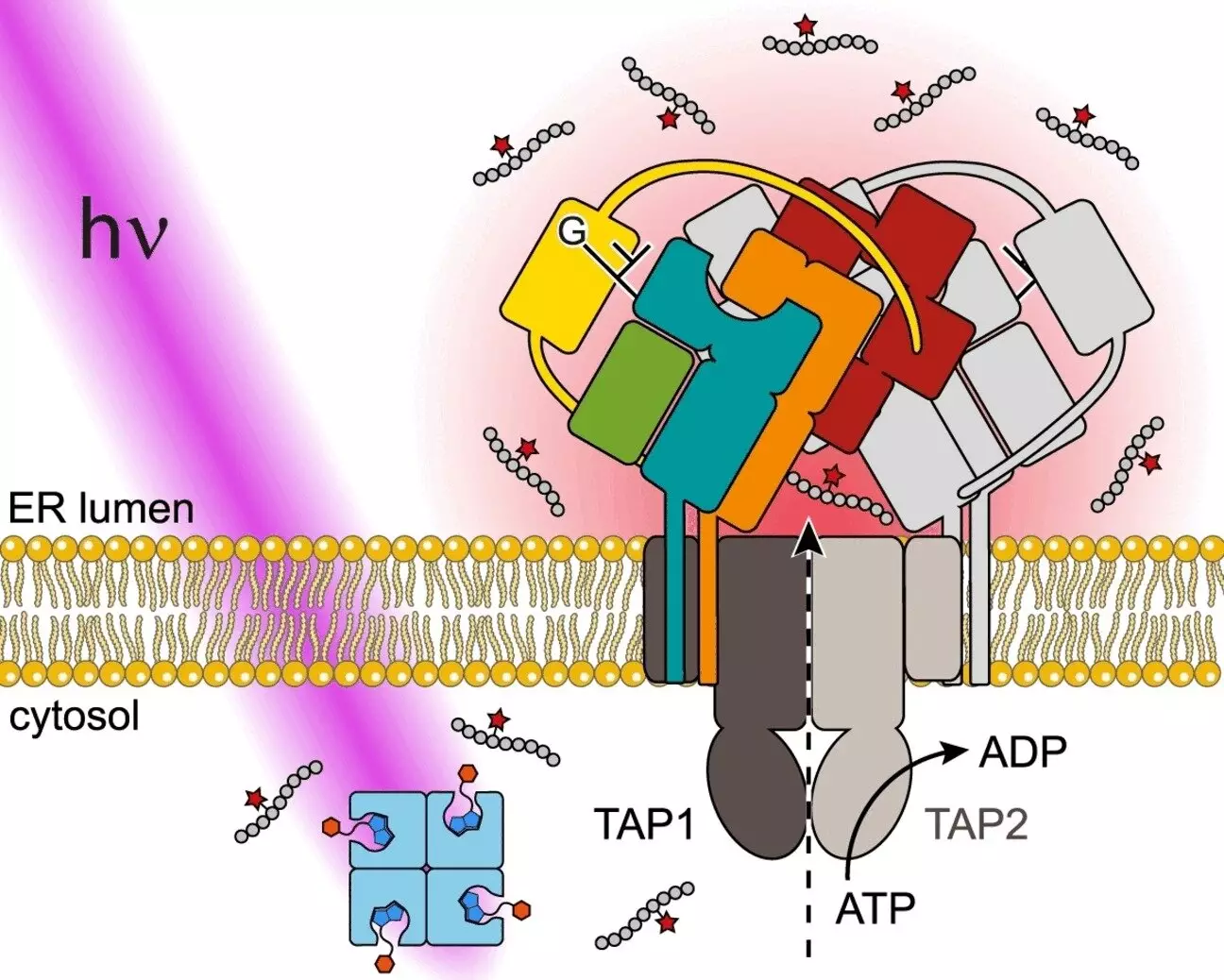The immune system is a complex network of cells and molecules that work together to protect the body from pathogens and cancer cells. One of the key mechanisms by which the immune system detects and eliminates diseased cells is through antigen processing. In our cells, both endogenous and foreign proteins are constantly broken down into tiny pieces and transported into the endoplasmic reticulum (ER) for further processing.
A recent study published in the journal Angewandte Chemie International Edition introduces a groundbreaking new approach to studying antigen processing. A German research team led by Ralph Wieneke and Robert Tampé at the University of Frankfurt am Main has developed a “cage” system that can be opened with light to release trapped antigens at a specific place and time. This innovative technique allows for the real-time analysis of complex antigen processing and transport processes within living cells.
The photostimulated antigen release system developed by the German research team offers several advantages for studying antigen processing. By using light to trigger the release of antigens from their “caged” inactive state, researchers can precisely control when and where the antigens are released. This noninvasive approach allows for experiments to be conducted in living cells, providing valuable insights into the dynamic processes involved in antigen presentation.
The researchers utilized a peptide derived from an HIV antigen as a model to demonstrate the versatility of their antigen release system. By attaching the peptide epitope to a protein called streptavidin via a linker that can be split apart by light, the researchers were able to precisely control the release of the epitope. Upon exposure to UV light, the peptide epitope is released from its cage and can then be recognized by the antigen processing transporter (TAP) and transported across the ER membrane for loading onto MHC I.
The development of the photostimulated antigen release system has far-reaching implications for the field of immunotherapy and beyond. By gaining a better understanding of the mechanisms involved in antigen processing, researchers may be able to develop new strategies for enhancing immune responses to cancer and other diseases. The ability to study antigen flux in real time using light stimulation opens up exciting possibilities for advancing our knowledge of the immune system and developing novel therapeutic approaches.
The use of light-stimulated antigen release systems represents a significant step forward in the study of antigen processing. By harnessing the power of light to control the release of antigens in living cells, researchers can gain valuable insights into the complex processes involved in immune surveillance. This innovative approach holds great promise for advancing our understanding of the immune system and developing new immunotherapies for a wide range of diseases.


Leave a Reply